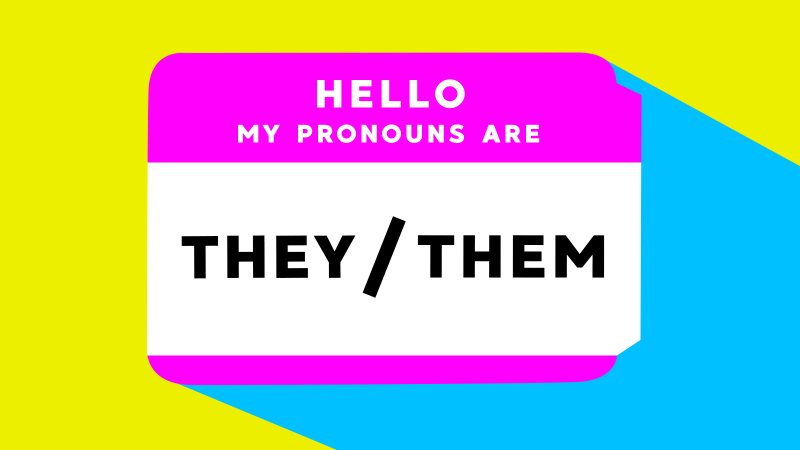If you’re on social media, or don’t live under a rock, you’ve probably seen people include their pronouns in their bio — whether it be on Instagram, Twitter, all the fun stuff.
If you don’t know what pronouns are, allow me to break them down for you:
If you’re a grammar nerd like myself, technically speaking, a pronoun is a word that can function by itself as a noun phrase and refers either to yourself in discourse (e.g., I, you) or someone/something mentioned (e.g., she, it, this).
Most commonly, you’ll likely stumble upon one of these three pronouns when you visit someone’s social media profile:
- She/her/hers — this means you refer to this person as she, her, or hers in discourse.
- He/him/his — this means you refer to this person as he, him, or his in discourse.
- They/them/theirs — this means you refer to this person as they, them, or theirs in discourse.
You will also see some people go by multiple pronouns, so it may look something like:
- He/they — this means you may refer to this person as he, him, his, or they, them, theirs.
- She/they — this means you may refer to this person as she, her, hers, or they, them, theirs.
Most commonly, you’ll see those who identify as non-binary use they/them or he/they or she/they pronouns. Non-binary is a term for people who aren’t comfortable being referred to as ‘man’ or ‘woman.’
Now back to the discussion at hand: most people tend to think that, if they’re cisgender, meaning they identify with the sex assigned to them at birth, why should they even disclose their pronouns if it’s “easy to tell what their gender is.”
Well, the answer is simple, yet not. The fact of the matter is, there’s no easy way to tell what someone’s gender may be or how they may identify. You don’t “look” transgender, and you don’t “look” non-binary. Assuming one’s gender simply based off appearance is offensive and perpetuates harmful stereotypes and transphobic rhetoric.
Disclosing your pronouns, whether it be in an email signature or your Instagram bio, helps normalise discussions about gender, especially for the trans and non-binary communities.
Because members of the non-binary and trans communities are often misgendered, it’s important for them to disclose their pronouns so they feel safe participating in discourse.
But doing this doesn’t and shouldn’t stop with the trans and non-binary communities.
Pronouns are an important move towards inclusivity: they allow everyone to feel safe in expressing themselves, it helps you avoid getting someone’s gender wrong, and it reduces the burden on our trans and non-binary friends so they don’t have to continuously explain their identity.
If you consider yourself an ally to the LGBTQIA* community, using your pronouns is a small move to you, but a big one that means the world to us. And when you do so, not only are you encouraging your cisgender friends to the same, but it’s a way to show members of the LGBTQIA* community that you care about their identity. It’s a badge of pride.
We as the LGBTQIA* community can only do so much when it comes to normalizing things like pronouns. And whether you’re a part of the community or not, I encourage you to put your pronouns wherever possible. With your help, we bridge the gap and open the conversation to pronouns and trans rights.

So true! Ughhh I haven’t come out as gay quite yet, but I think I’ll start using my pronouns in my bio as a hint to some of my friends and then I’ll come out to them. Thanks for sharing!
LikeLike
Thanks for the comment, Luke! I know how it feels. I definitely encourage you to put your pronouns in your bio!
🙂
LikeLiked by 1 person
❤️🤠
LikeLike